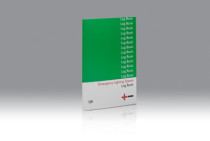Emergency Lighting
Emergency lighting is a legal requirement for all businesses and organisations as defined by the Fire Regulatory Reform Order 2005 and British Standards BS 5266 Part 1: 2005 (Code of practice for the emergency lighting of premises).
Fluorescent Lighting Services specialise in the installation of emergency lighting as well as the maintenance and periodic inspection and testing of existing emergency lighting installations. Our electrical engineers are fully versed in all current regulations regarding emergency lighting.
Emergency Lighting Testing & Commissioning
In addition, Fluorescent Lighting Services also offer the service of emergency lighting testing. Current regulations stipulate that each emergency light should be visually checked weekly for operation, with actual testing of the emergency lighting being carried out on a monthly basis. Once a year, your emergency lighting system should be tested for a 3-hour period, as the regulations state a system should operate for a 3-hour period to allow people to evacuate a building in the event of an emergency where the power has failed. This annual test should be carried out by a ‘competent person’ and a periodic inspection and test certificate issued. Our services include an annual emergency lighting testing contract whereby we carry out all monthly testing on your behalf, or should you prefer to carry out the monthly testing yourselves, a visit once per year to carry out the annual 3-hour test. As per the legal requirements Fluorescent Lighting Services will also provide your Company with an Emergency Lighting Logbook which should be updated after each emergency lighting test.
An emergency lighting logbook is a requirement as stated in the emergency lighting Code of Practice (BS5266 Part 1:2006). An emergency lighting logbook records all details on your emergency lighting installation. It should include details of the electrical contractor who installed your emergency lighting installation and details of the electrical contractor who maintains your emergency lighting installation. It should also contain technical details such as an emergency lighting design guide anbd photometric data. Also included should be a plans showing the locations of all your emergency lights and details of testing, maintenance and repairs. Each time a test of the emergency lighting installation is carried out or an emergency light, is repaired, replaced or installed, the emergency lighting logbook should be updated. It may be required should you receive a visit from the HSE or a Fire Officer.
Fluorescent Lighting Services specialise in Emergency Lighting and our electrical engineers are able to offer specialist advice on how your organisation can confirm to the emergency lighting Code of Practice (BS5266 Part 1: 2005) and the Fire Regulatory Reform Order 2005.








